On Oct. 2, 2019, the San Jose Sharks began their campaign for a franchise-first Stanley Cup. After two Western Conference Final appearances and a Stanley Cup Final berth in four years, the team looked like a prime candidate to compete for a championship.
But looking back at that opening night roster, it’s easy to see the flaws in these high aspirations. Having the likes of Daniil Yurtaykin, Dalton Prout, and Lean Bergmann as role players saw the Sharks finish third-worst in the league.
While the club still had great contributions from veterans like Brent Burns, Erik Karlsson, Logan Couture, Tomas Hertl, and Evander Kane, they had a deficient supporting cast. After all, the previous 2018-19 season saw Timo Meier and Kevin Labanc make massive contributions on rookie salary.
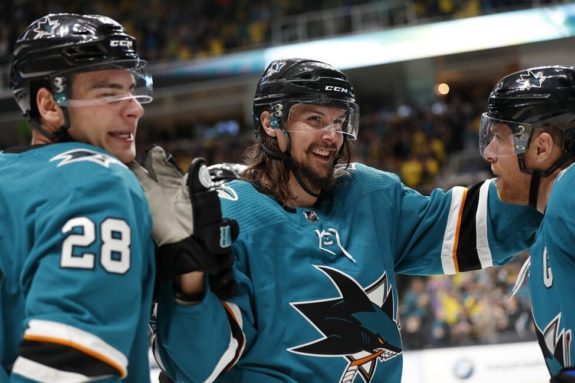
In the last three seasons, the Sharks have not supplemented their talented, but expensive, core with enough support. Next season, the team is hopeful William Eklund, Thomas Bordeleau, other 2020 NHL Drafted prospects, and some already debuted players can make the key impacts similar to Meier and Labanc previously.
But, what happened in the last three years and why should the team be more optimistic about their future?
Pre-Wilson Jr. Drafting
With Sasha Chmelevski, Scott Reedy, Ryan Merkley, and Jasper Weatherby all making meaningful NHL impacts this season, and expected to be intriguing depth options moving forward, it is clear that Doug Wilson Jr.’s drafting success began as soon as he became part of the process ahead of the 2017 NHL Draft. In fact, five out of Wilson Jr.’s picks in 2017 have already debuted in the NHL with Mario Ferraro and Josh Norris being the best of that bunch.
Related: Sharks’ Strauss Mann Could Fix Goaltending Crisis
In the 2015 and 2016 Drafts, the Sharks did not add enough quality NHL-level talent. Prospects selected in these classes would have developed and been on entry-level deals the last few seasons. But even in a stacked 2015 Draft class, the team did not make enough of an impact.
The Sharks selected two NHLers in the 2015 Draft, from nine picks. In fairness, Rudolfs Balcers and Timo Meier are great adds, but multiple head-scratching picks include two high school prospects and a North American Hockey League goalie. Third-round pick Mike Robinson only cracked the low-level United States Premier Hockey League in the season after his selection, and now has five college hockey seasons under his belt.
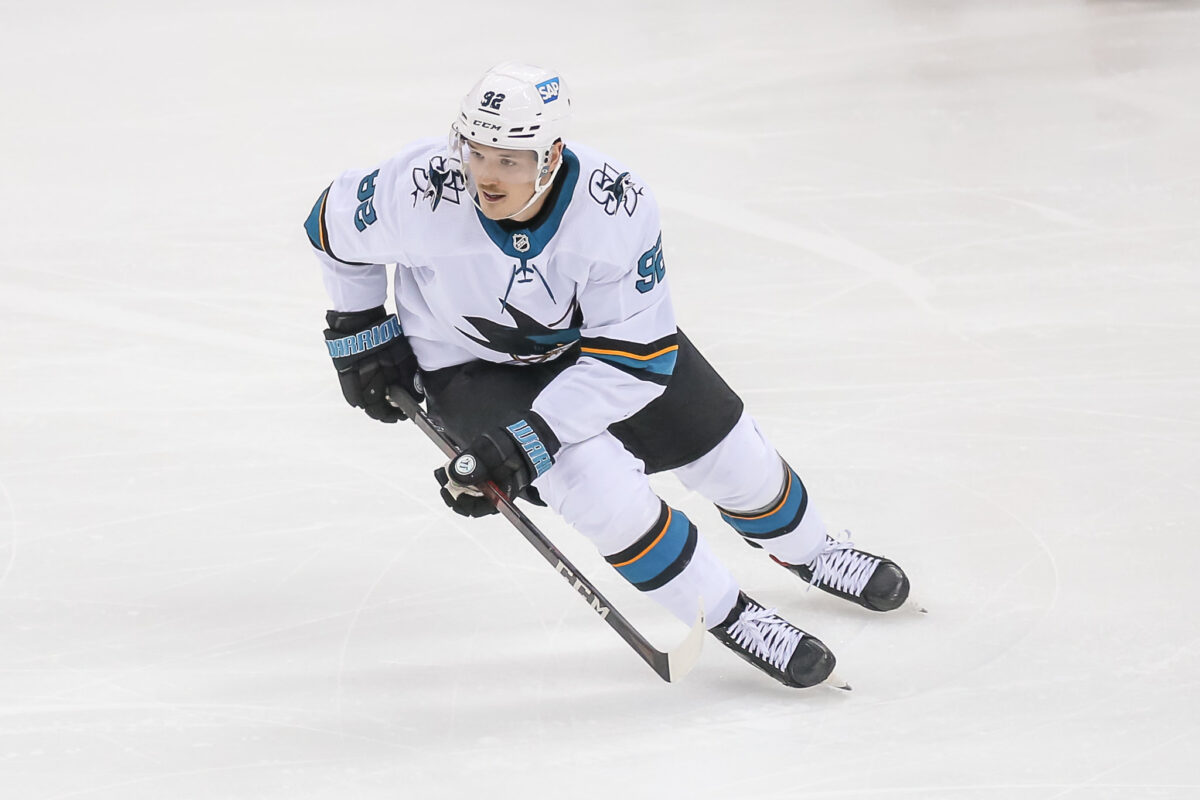
The 2015 class was bonkers. Half of the prospects selected in rounds 2-5 have at least made NHL debuts. The Sharks drafted only one NHLer in that range. The Sharks luckily recouped that player, Balcers, in a waivers acquisition during the 2020-21 season.
2016 was more successful but certainly questionable. The Sharks traded their first-round pick and used their second-rounder on third-time draft-eligible Dylan Gambrell. After a defense-heavy role where he struggled to put up positive results in 2020-21, the center was claimed on waivers earlier this season by the Ottawa Senators.
The team did select Noah Gregor in the fourth round who is a notable depth option moving forward. The other NHLer selected was Joachim Blichfeld, who I would be surprised to see retained for next season considering the amount of young talent joining the minor leagues.
Sharks’ Future Depth Scorers
In order to replicate their past playoff successes, the Sharks will need young talent to manifest as depth scorers quickly. Luckily, recent drafting and developments success should make for several options.
Gregor has seen some recent success, after a horrid shooting slump to begin his 2021-22 campaign. He has two goals and four points through his last five games from the third line. He’s also averaged just under three shots in each of those games. He’s a speedy winger with a quick release on his shot. Thankfully, that shot is starting to hit the back more often. For reference, his shooting percentage is 4.1% this season, after being above 8% his previous two years.
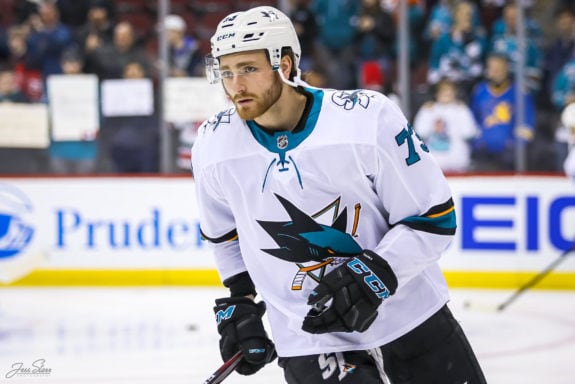
Sasha Chmelevski, a 2017 sixth-rounder, looked comfortable in a top-six role a few games ago before rejoining the fourth line. With the versatility to play both winger and center, he’s always a nice depth option to keep around. Through 12 games in April, the 22-year-old has five assists. Among forwards, Chmelevski has the third-best impact on the team’s control of expected goals behind Meier and Logan Couture.
Scott Reedy has cooled from his hot streak earlier in April. He has three goals and an assist in his last seven games, all even-strength and while in a bottom-six role. He’s struggled to replicate the immense goal-scoring success he maintained during his senior college season in 2020-21 and with the San Jose Barracuda earlier this season.
Luckily for the Sharks, Reedy has another year left on his entry-level deal. While Chmelevski likely still receives a minimal two-way deal, Gregor’s contract is a little trickier considering he’s played most of the year in the NHL. Gregor’s contract negotiations lasted until the start of training camp last offseason.
Then, of course, there is Bordeleau. Through five games as a third line center, the former Michigan Wolverine has three primary assists and a shootout game-winner. He’s already warranted key minutes at the end of games, on the power play, and in 3-on-3 overtime.
Still just 20 years old, he’s been a massive bright spot to close out the season. In a very limited sample, Bordeleau has been a slight positive impact on controlling expected goals and his line with Balcers and Gregor has outscored opponents 4-2 at even-strength. As of now, he could have the inside track to the team’s third center spot next year.
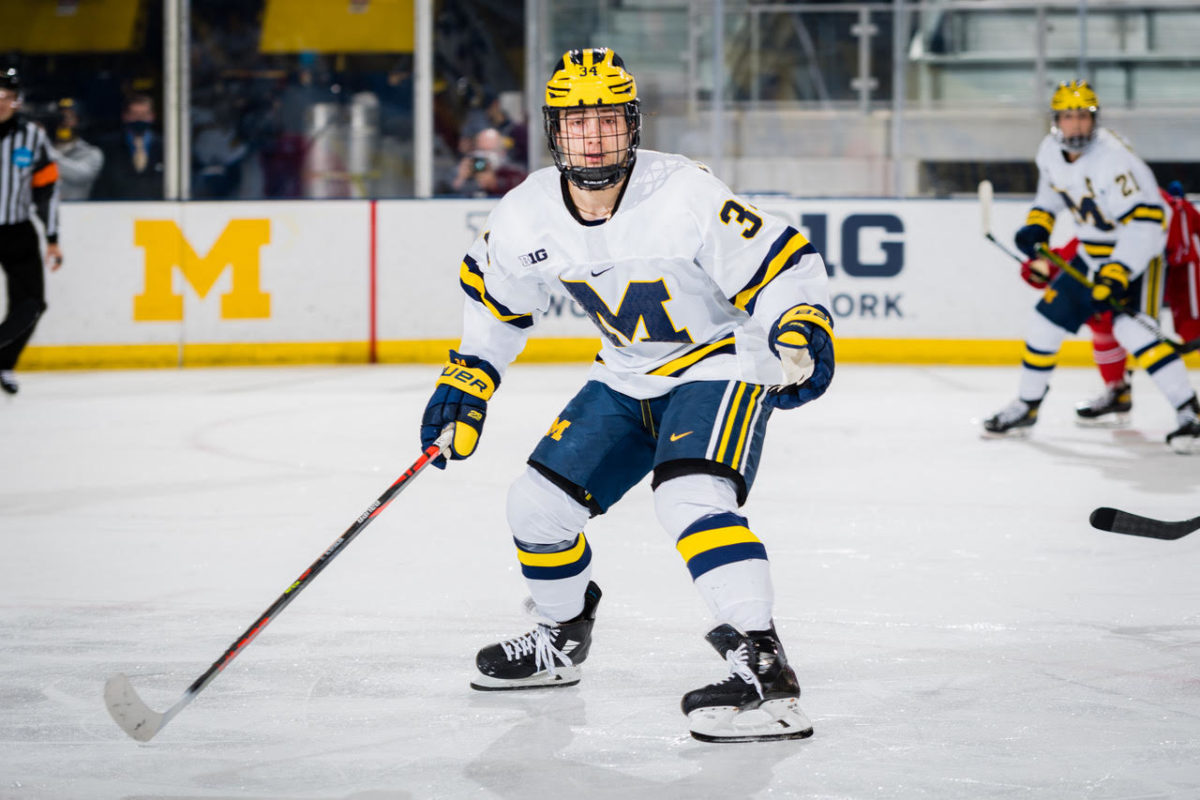
Assuming all are with the organization next season, these options have proven they can chip in offensively on a team that’s lacked depth scoring for three seasons. Cumulatively, the group of four players would be easily under $4-million against the salary cap, making these options all the more appealing for next season and beyond.
Wilson Jr.’s drafting has greatly bolstered the Sharks’ prospect pool even when he had few picks and low draft positioning.
Sharks Have Other Future Depth Options
In addition to Bordeleau, the majority of the team’s highly-touted 2020 draft class is turn professional next season. This includes the Sharks Prospect of the Year in Brandon Coe, top-10 Ontario Hockey League goal-scorer Daniil Gushchin, and Western Hockey League dominant prospects like Tristen Robins and Ozzy Wiesblatt.
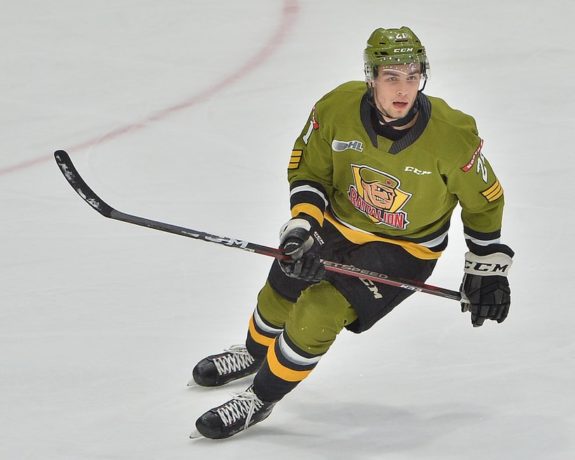
While I expect all those forwards to join the Barracuda to start the season, any of them could continue their offensive success and quickly earn an NHL spot.
The Sharks’ offense has struggled for a large part of the season. According to Hockey Reference’s numbers, the team has an average save percentage and just under-average defense. The team must improve their offense in order to receive a postseason berth. These young talents could add the needed spark should the team not add worthwhile help in free agency.
What do you think of the Sharks’ future depth options? Let me know in the comments!